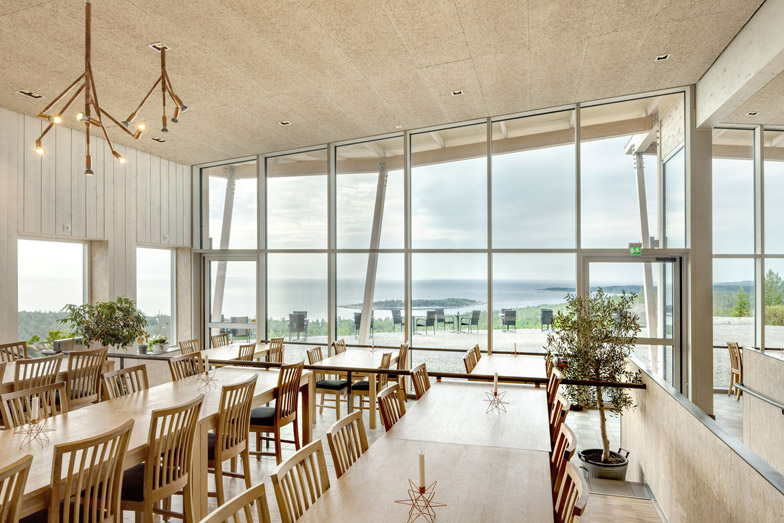A Cold War fortress on a Swedish island is the setting for this timber-framed restaurant by Sweco Architects (+ slideshow).
The building is located at the Hemsö Fortress, one of the cornerstones of Sweden's coastal defence artillery during the Cold War, and the only surviving facility of its kind in the country.
The fortress is now being opened up as a tourist attraction, so Uppsala-based Sweco Architects was tasked with designing a restaurant for visitors.
The studio's aim was to create a building that references the military history of the site, but also fits in with its elevated clifftop setting, facing out over the Gulf of Bothnia.
To achieve this, it combined traditional forms with natural materials and large windows.
"A 'refined barracks' was a motto in the design process," explained the design team, which was led by project architect Sverker Cajmatz.
"The tilted and angled roofs and the box shape were a nod to the military buildings trying to hide in the terrain," added the studio. "The large glass surfaces on the other hand will welcome and invite the visitors as they approach the restaurant."
Glulam – an engineered wood produced by glueing together layers of timber – forms the building's structural framework, which is exposed both inside and out.
Around the perimeter, the angled glulam beams support the overhanging roof, creating a sheltered area around the perimeter where visitors can take in the view.
The building has a simple rectangular plan, which is divided in half to create a dining area at the front and kitchen spaces at the back.
Wood dominates in the customer areas – ash parquet provides flooring, the walls are lined with wooden boards and the ceilings are covered in sound-absorbent wood panels. Other details include branch-like lighting fixtures and large potted plants.
Sweco Architects forms part of the wider Sweco company, a large architecture and engineering consultancy. Other projects by the studio include a pair of ski jumps and a hair salon filled with green boxes.
Photography is by Tim Meier.







